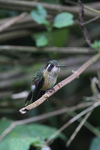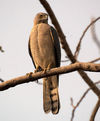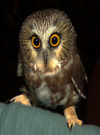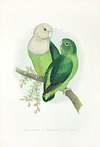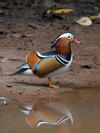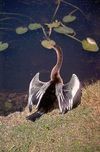Birds
A feathered, warm-blooded, winged animal is known as the modern day bird. Found covering the entire earth, these ancient creatures have developed a sense of navigation and homing ability to detect the Earth’s magnetic field. There are approximately 9700 species of birds living today.
After the extinction of dinosaurs about 65 million years ago, many bird species disappeared as well. The birds that did survive appear to be related to shorebirds that were large predatory, flightless animals known as Diatrymas, with heads roughly the size of a horse. These Diatrymas replaced the predatory dinosaurs and dined on small mammals. Many species evolving from this Diatrymas, adapted to both land, salt water, and later even urbanized parts of the world. Some birds evolved as human food sources such as chicken and other game birds, others still adapted to rain forest temperatures and environments and still others as arid dwelling birds.
The modern bird species, consisting of Seabirds, pelicans, flamingos, waterfowl, loons, parrots, plantain eaters, songbirds, bee-eaters, hummingbirds, spoon bills and mouse birds, to name a few evolved based on their ability to adapt to the needs of the planet. Modern birds coincide with humanity in their ability to feed on populations of harvest investing insects, small mammals and nuts, seeds and flowering plants; some maintain fish, algae and lichen water populations. Even larger bird species such as ravens, eagles, hawks and vultures control and scavenge smaller bird populations. Clearly, its place in the food chain maintains ecological balance, cleaning seabeds, tree branches, forest floors, farms, and smaller bird populations. The beak or bill of birds helps to determine their diet. The seabird lives on and around water bodies diving for fish. Some species of birds have long beaks for digging for insects in trees and grasses. In general birds eats grains, seeds, insects, fruits, nuts, small animals as well as species like pigeons that have recently been documented with nicotine addictions from scavenging foods and garbage remains in urban communities.
Birds are separated from other animal populations in several ways. They share their unique abilities with some mammals; however, birds have beaks, scales on their legs, feathers and they lay eggs. Mammals have teeth, fur or hair, give live birth and suckle their young; one aspect that birds do not share, this ability to suckle separates birds from other animals. Because of natural selection, even these distinctions are blurred in some species.
Two unique species of birds exist mainly in tropical waters and little populated areas of the world due to deforestation, pollution, and extinction. The Frigatebirds are sea birds that have inflatable colored throat pouches. They do not swim or walk and must take off from a flat surface due to their body weight to wingspan ratio. These birds remain in flight for more than a week and there are only five species worldwide, one of which is in Trinidad. Although you can purchase a plastic Flamingo in any home and garden store, these wading birds that feed on shellfish and algae, have only six species remaining worldwide, most which are again in Trinidad. They fill their large pouch-like beaks with mud and silt from the food they eat. Other populations of unique birds include chickens. In France and Switzerland, these flightless birds have developed featherless necks, abundantly feathered bodies and dark blue bones and cartilage perhaps because of accidental and intentional crossbreeding for use as show or exhibit birds.
For the fear of birds, see 'Ornithophobia'...

